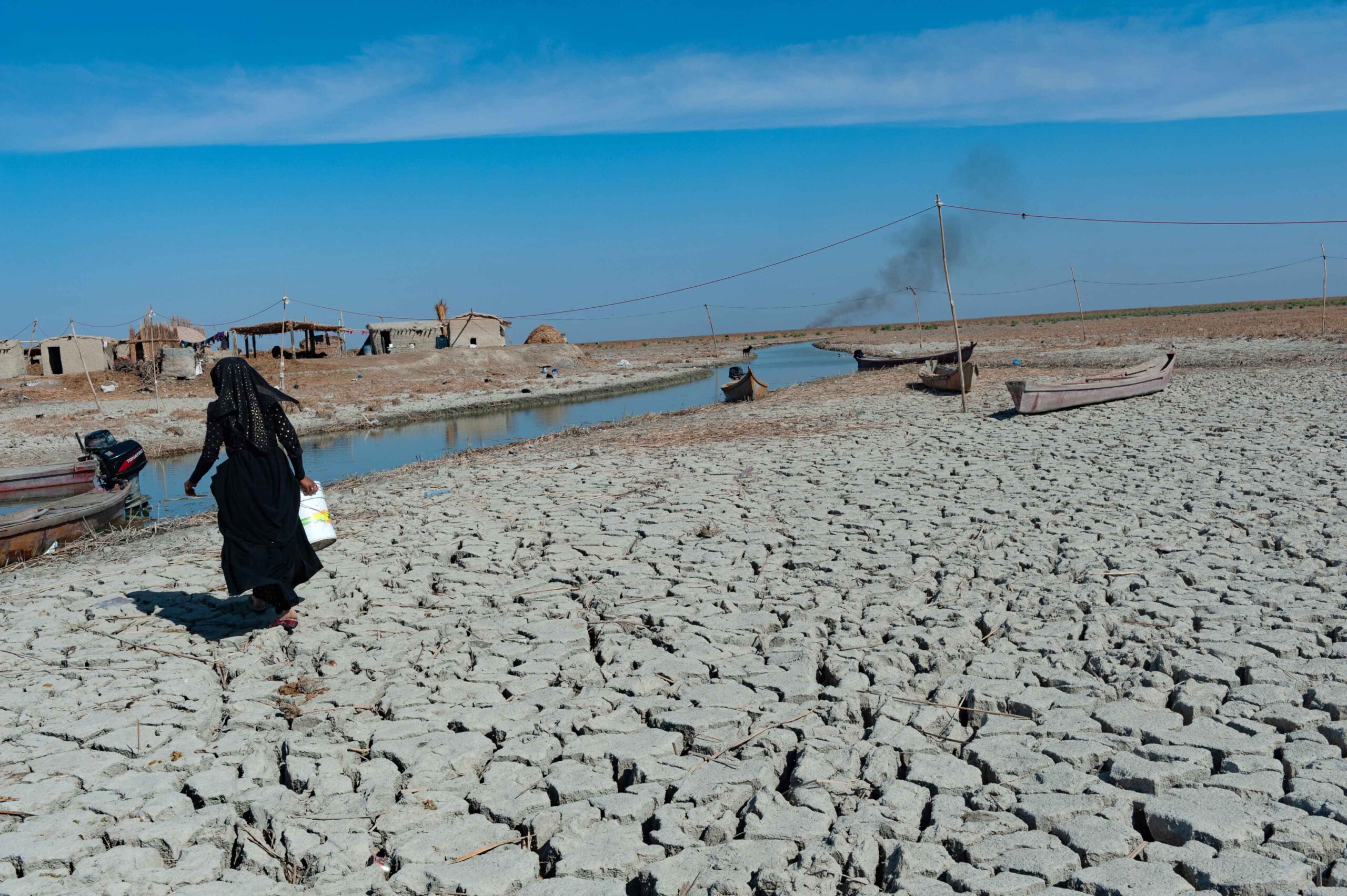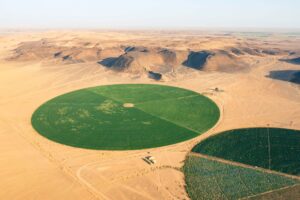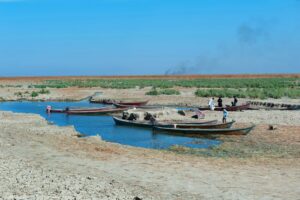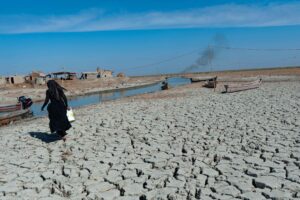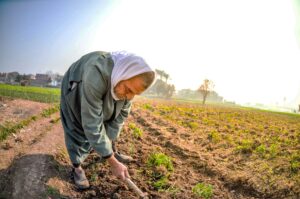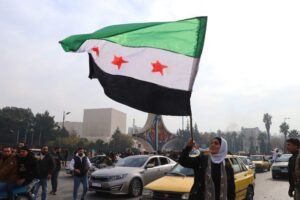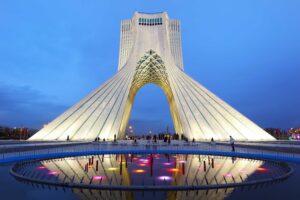“Climate point 1” is one of the most important scientific concepts regarding global and regional climate change and serves as a basic indicator for the direction climate change will take in the near- to long-term future, analysing current trends and potential future scenarios in order to protect people in all regions of the world.
Climate point 1 means that only 1% of a certain area of land (at the state, regional, or global level) will be suitable for life, and that 1% of the population at those same levels will be able to survive the exacerbated effects of climate change. Climate point 1 can be useful in mathematical prediction models and empirical climate-related measurements as a benchmark against which the degree of climate risk is evaluated in a given territory and\or timeframe.
The already well-established methods of geological analysis are instrumental in highlighting particular areas of the world as well as the timeline of their exposure to the risks of advancing towards a scenario envisioned by climate point 1.
Such scientific methods examine the relationship between spatial connectivity in terms of seas or oceans and coasts; the interconnectedness of change between oceanic water masses and the atmosphere; the changes in atmospheric pressure and the temperature of ocean currents; wind direction; the types, height and depression of the shapes of the Earth’s surface, and their natural characteristics; and the angle of solar radiation.
Human impact on the environment is another crucial component to consider in scientific investigations. Among these, industrial production, waste management and agricultural methods, overgrazing, the expansion of urban areas, the destruction of vegetation, and the use of chemical products are all relevant.
While “climate point 1” is still under study, preliminary frameworks have already been formulated to classify the importance of natural and human factors contributing to it. In this framework, 10% of the influence is attributed to natural elements while as much as 80% is assigned to human impact. Natural disasters and emergencies contribute towards 5% of reaching climate point 1.
The Middle East and North Africa (MENA) region is considered the most sensitive and vulnerable region to reaching climate point 1, and this is due to a combination of natural and human factors. The MENA region’s temperatures have risen at a rate twice the global average, rainfall has become scarce and the patterns of solar radiation have changed.
The region also emerges as one of the global hotspots for worsening extreme heat, drought and aridity. A synthesis of peer-reviewed literature from 2010 to date and the author’s own modelling work on biophysical impacts of climate change on selected sectors shows that the region is highly affected by both present and future climate change. These biophysical impacts paired with other pressures and a lack of resilience in some countries cause high vulnerabilities.[i]
MENA countries with large populations will have the highest gaps between water demand and the availability of this basic resource under average scenarios of future climate change.[ii] In fact, the global reports are rather alarming because global surface temperatures were projected to rise by up to 4–8 °C above pre-industrial levels throughout the 21st century according to unrealistic shared socioeconomic pathways while projecting variant trends in rainfall direction and magnitude across the MENA region[iii]. This means the continuous rise in temperatures and the fluctuation of rainfall leads to a disruption in people’s living system, simultaneously with changes in their social structure and economic changes.
The MENA region on the fast track towards climate point 1
A number of factors have contributed towards the MENA region’s countries becoming some of the most vulnerable to the effects of climate change in the world. These include the region’s arid and semi-arid climate, water scarcity, land degradation and desertification, rapid population growth, poor agricultural practices, and the concentration of agriculture in coastal areas threatened by rising sea levels, all of which increase these countries’ exposure to food insecurity.
Climate change will likely further exacerbate these problems. The expansion of cities due to rapid urbanisation has influenced their morphology and density, leading to an increase in their energy consumption. Urban climate and climate change exacerbate energy needs, but with urban planning aid, there is a high potential for mitigating climate change using strategic tools.[iv] Conventional water sources are essential for supporting agriculture, industry, and households in the Southeast Mediterranean and the Middle East[v], but their availability varies between nations, with some struggling with scarcity issues more than others.[vi]
The Middle East and North Africa contain both poorer countries and richer countries, but both types face difficult challenges in the face of climate change. Shortly after Arab Gulf states began to study climate challenges, they ratified the “United Nations Framework Convention on Climate Change” of 1992[vii] and the “Paris Climate Agreement” of 2015, in addition to submitting their “Nationally Determined Contributions” outlining their commitments to mitigate and adapt to climate change. COP 28 held in the UAE in 2023 furthered these efforts through building models of international and regional cooperation.[viii] Still, the climate conditions of the region are considered especially difficult.
High summer temperatures, limited amounts of rainfall, and decreased water runoff from mountaintops lead to severe disruptions in agricultural activity in the MENA region, a sector that employs more than 35% of the region’s workforce. This could lead to further hardship and unrest in countries impacted by climate change, increasing famine and mortality rates.
The frequency of flash droughts has also increased over the past 100 years in the region.[ix] [x]
In addition, the MENA region is the most exposed to water stress in the world as it contains 6.3 % of the world’s population while it only has access to about 1.4 % of the world’s renewable fresh water resources.[xi] This entails that only approximately 1100 cubic metres (m3) of natural renewable water resources (NRWR) are available per capita per year.[xii]
In addition to the effects of the current level (1970-2025) of average temperature rise of 0.8 degrees Celsius, the region has to contend with the highest temperatures it has witnessed in 50 years. We find that both weather shocks and long-term effects of climate change – especially in the form of increasing temperatures – are associated with a decrease in the health of the populations impacted by them. This is particularly pronounced in relatively poor countries, possibly because these countries are more vulnerable to weather shocks and changing climate conditions[xiii] due to their lack of resources in prevention, mitigation and crisis response. The results of the latest IPCC report highlighted the urgent need for combating climate change[xiv], not in least part due to its potential in disrupting entire food chains and increasing regional and domestic competition for natural resources.[xv] The adaptation measures to be undertaken range across sectors, thematic fields and geographical locations.[xvi]
Climate change, according to the United Nations, is “the defining crisis of our time”. At the same time, some say that humanity has even entered an age of “perpetual crisis” characterised by multiple and sometimes overlapping crises. Generally, crises are understood as major shocks affecting the livelihood of many people, such as natural disasters, wars, pandemics, economic shocks, or environmental catastrophes.[xvii]
The impact of climate change on the population of the Middle East and North Africa region has already demonstrated—and will likely continue to showcase—that the process merits the label of a crisis.
[i] Waha, K. (2017). “Climate change impacts in the Middle East and Northern Africa (MENA) region and their implications for vulnerable population groups”, Regional Environmental Change, retrieved from: https://link.springer.com/article/10.1007/s10113-017-1144-2.
[ii] Lange, M.A. (2019). “Impacts of Climate Change on the Eastern Mediterranean and the Middle East and North Africa Region and the Water–Energy Nexus”. Atmosphere, retrieved from: https://www.mdpi.com/2073-4433/10/8/455.
[iii] Ajjur, S.B., Al-Ghamdi, S.G (2021). “Evapotranspiration and water availability response to climate change in the Middle East and North Africa”, Climatic Change, 166, 28, retrieved from: https://doi.org/10.1007/s10584-021-03122-z.
[iv] Fereidani, N.A. (2021). “A review of the energy implications of passive building design and active measures under climate change in the Middle East”, Journal of Cleaner Production, retrieved from: https://www.sciencedirect.com/science/article/abs/pii/S0959652621013718.
[v] Zittis, G. (2022). “Climate Change and Weather Extremes in the Eastern Mediterranean and Middle East” AGU Advancing Earth and Space Sciences, retrieved from: https://agupubs.onlinelibrary.wiley.com/doi/10.1029/2021RG000762.
[vi] Adamopoulos, I. P., Syrou, N. F., Adamopoulou, J. P., & Mijwil, M. M. (2024). “Conventional water resources associated with climate change in the Southeast Mediterranean and the Middle East countries”, European Journal of Sustainable Development Research, 8, 3, retrieved from: https://doi.org/10.29333/ejosdr/14860.
[vii] Sarihi, A. (2023). “Climate Change Management in the Arabian Gulf Region: Commitment, Challenges and Prospects.” Emirates Policy Center, retrieved from: https://epc.ae/ar/details/featured/idarat-taghyur-almunakh-fi-mintaqat-alkhalij-alearabii-alsiyasat-waltahadiyat-walafaq#_edn11.
[viii] Gulf Cooperation Council (2024). “HE the GCCSG: Environmental Protection and Addressing the Impacts of Climate Change have become Essential Parts of the National Visions of the GCC states”, retrieved from. https://gcc-sg.org/en/MediaCenter/News/Pages/news2024-9-9-10-1.aspx.
[ix] Bharambe, K.P., Shimizu, Y., Kantoush, S.A., Sumi, T. and Saber, M. (2023). “Impacts of climate change on drought and its consequences on the agricultural crop under worst-case scenario over the Godavari River Basin, India”, retrieved from: https://www.sciencedirect.com/science/article/pii/S2405880723000778.
[x] World Economic Forum (2023). “How can we mitigate the impact of flash droughts?”, retrieved from: https://www.weforum.org/stories/2023/06/how-to-mitigate-flash-droughts-impact/.
[xi] Mahmoudi, A., Bostani, M., Rashidi, S., and Valipour, M.S. (2023). “Challenges and opportunities of desalination with renewable energy resources in Middle East countries”, Renewable and Sustainable Energy Reviews, retrieved from: https://www.sciencedirect.com/science/article/abs/pii/S1364032123004008.
[xii] Neira, M. (2023). “Climate change and human health in the Eastern Mediterranean and Middle East: Literature review, research priorities and policy suggestions”, Environmental Research, retrieved from: https://doi.org/10.1016/j.envres.2022.114537.
[xiii] Meierrieks, D. (2021).”Weather shocks, climate change and human health”, World Development, retrieved from: https://doi.org/10.1016/j.worlddev.2020.105228.
[xiv] The Intergovernmental Panel on Climate Change (IPCC) (2023). “The IPCC prepares comprehensive Assessment Reports about knowledge on climate change”, retrieved from: https://www.ipcc.ch/reports/.
[xv] The National Oceanography Centre (2022). “NOC contributes to latest IPCC report assessing impacts of climate change”, retrieved from: https://noc.ac.uk/news/noc-contributes-latest-ipcc-report-assessing-impacts-climate-change?gad_source=1&gclid=CjwKCAiA1eO7BhATEiwAm0Ee-MTyR5SfsHAk2Ku3IcCb-ac-MVCDIJQ9Cmv-oIjIy8kLssezjljzlhoCUTYQAvD_BwE.
[xvi] Filho, W.L. (2023). “Climate Change Strategies: Handling the Challenges of Adapting to a Changing Climate”, Springer, retrieved from: https://link.springer.com/book/10.1007/978-3-031-28728-2.
[xvii] Rinscheid, A., Koos, S. (2023). “War and pandemic do not jeopardize Germans’ willingness to support climate measures”, Commun Earth Environ, 4, 101, retrieved from: https://doi.org/10.1038/s43247-023-00755-z.


